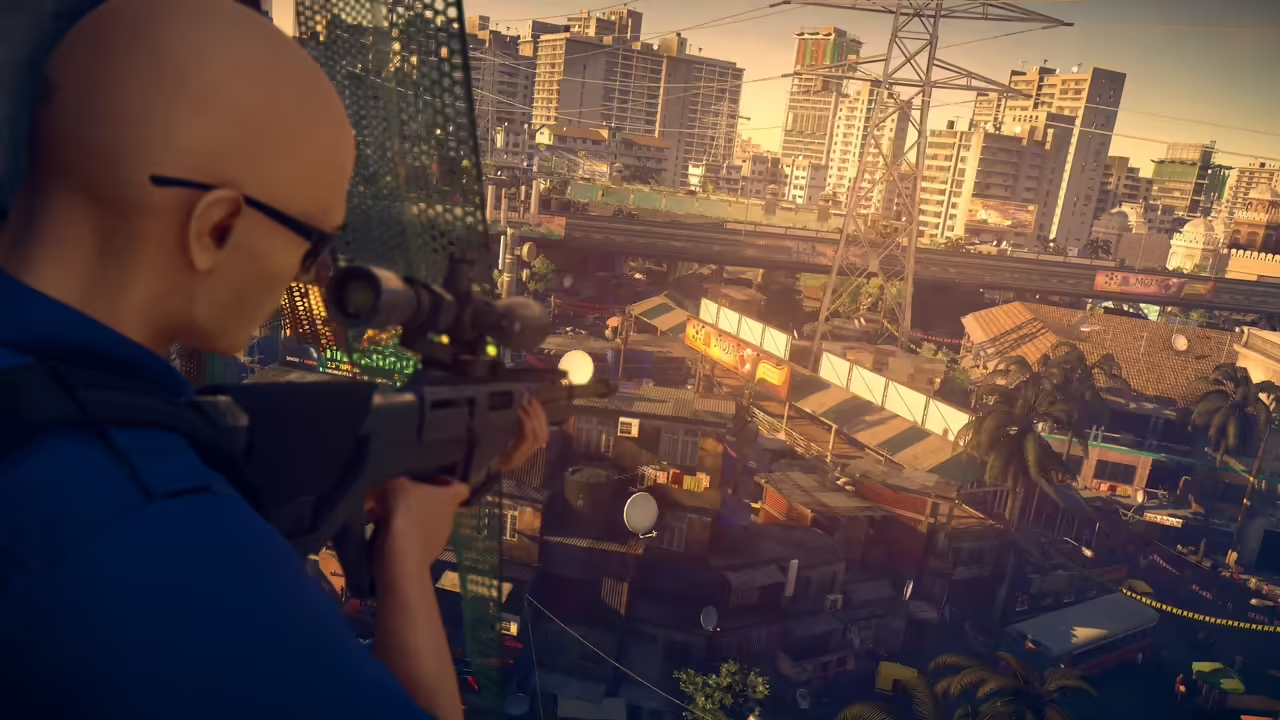
In the realm of video games, the name “Hitman” is synonymous with the art of stealth and assassination. Developed by IO Interactive and published by Warner Bros. Interactive Entertainment, “Hitman 2” is the eagerly awaited sequel to the rebooted “Hitman” series, promising a thrilling, immersive experience for both long-time fans and newcomers to the franchise.
The Hitman Legacy
Before we dive into the world of “Hitman 2,” let’s take a moment to appreciate the legacy that precedes it. The Hitman franchise has a rich history dating back to the year 2000 when the first game in the series, “Hitman: Codename 47,” was released. It introduced players to Agent 47, a genetically-engineered assassin with unparalleled skills in the art of assassination. Over the years, the franchise has evolved, spawning several successful titles that have captivated players with their complex narratives, intricate level design, and, of course, the freedom to approach missions with creativity and stealth.
The Plot Unfolds
“Hitman 2” picks up where its predecessor left off, continuing the story of Agent 47 as he travels the globe to dismantle a shadowy organization that holds the world at its mercy. The game’s narrative promises to be a captivating blend of espionage, intrigue, and high-stakes action. As players guide Agent 47 through a series of challenging assignments, they will uncover dark secrets, encounter intriguing characters, and ultimately confront the enigmatic forces behind the global conspiracy.
Freedom of Approach
One of the hallmark features of the Hitman series is its sandbox-style gameplay, and “Hitman 2” takes this concept to new heights. Players are presented with vast, open-ended environments where creativity is rewarded. Whether you prefer the silent approach, using disguises and stealth to complete your mission, or you opt for a more direct approach, making use of an arsenal of weapons and gadgets, the choice is yours. The game encourages experimentation, allowing players to shape the outcome of each mission based on their decisions.
Stunning Locations
“Hitman 2” transports players to exotic locations across the globe, each meticulously designed with attention to detail. From the bustling streets of Mumbai to the serene shores of New Zealand, the game offers a visual feast that immerses players in diverse and immersive environments. These locations serve as more than just backdrops; they become integral elements of the gameplay, offering opportunities and challenges that are unique to each setting.
The Evolution of AI in the Hitman Series
The Hitman series has long been acclaimed for its innovative use of artificial intelligence (AI) to create challenging and immersive gameplay experiences. Over the years, the AI in Hitman games has evolved significantly, leading to more realistic and dynamic interactions between players and non-playable characters (NPCs). Let’s take a journey through the series to explore how AI has evolved from its early days to the latest installment, Hitman 2.
Hitman: Codename 47 (2000)
In the series’ debut, “Hitman: Codename 47,” the AI was a groundbreaking leap for its time. NPCs had basic routines and could react to loud noises or suspicious behavior, but their responses were somewhat predictable. The game introduced players to the core concepts of stealth, disguise, and silent takedowns, laying the foundation for future titles.
Hitman 2: Silent Assassin (2002)
With “Hitman 2: Silent Assassin,” the AI received significant enhancements. NPCs became more aware of their surroundings and could detect unusual actions, like spotting the player in a restricted area. This forced players to be more cautious and strategic in their approach.
Hitman: Contracts (2004)
“Hitman: Contracts” refined the AI further, making NPCs more responsive and adding depth to their behaviors. The improved AI made the game’s darker and more atmospheric levels even more immersive, as players had to adapt to the evolving threat of their enemies.
Hitman: Blood Money (2006)
“Hitman: Blood Money” marked a significant milestone in the series. The AI was overhauled to give NPCs more individuality and personality. Guards would converse, react realistically to dead bodies, and even display emotions like curiosity or fear. This made the game’s world feel alive and dynamic.
Hitman: Absolution (2012)
“Hitman: Absolution” continued to refine the AI, adding more complexity to NPC behavior. Guards would work together in teams, coordinate searches, and employ different tactics depending on the situation. This required players to adapt and think on their feet, making the stealth experience even more challenging.
Hitman (2016)
The 2016 reboot simply titled “Hitman” brought the series into the modern era. AI became more dynamic than ever, with NPCs following detailed routines and reacting realistically to environmental changes. The game introduced “Opportunities,” which allowed players to manipulate the AI to create opportunities for assassinations in unique and creative ways.
Hitman 2 (2018)
“Hitman 2” continued the legacy of the 2016 reboot, refining the AI systems further. The game introduced new elements like crowd blending and mirror reflections, making it even more challenging for players to maintain their cover and execute their missions undetected.
The Crucial Role of AI in Hitman 2 Gameplay
In the world of video games, artificial intelligence (AI) plays a pivotal role in shaping the overall experience. Nowhere is this more evident than in the case of “Hitman 2,” where AI serves as the beating heart of gameplay, fundamentally influencing how players approach each mission and making the experience uniquely immersive.
Dynamic Challenges
At its core, “Hitman 2” is a game about infiltration, espionage, and, of course, assassination. What sets it apart is the dynamic and responsive AI that populates its meticulously crafted worlds. The AI-controlled non-playable characters (NPCs) in the game are far from static, lifeless entities. Instead, they are programmed to mimic human behavior and react to their environment.
This realism in AI behavior elevates the game’s challenges to new heights. NPCs follow routines, interact with each other, and respond to unexpected occurrences. This means that players can’t rely on predetermined patterns to succeed; they must adapt to the evolving situations and use their wits to stay ahead of their targets and their handlers.
The Thrill of Immersion
“Hitman 2” thrives on immersion, and the AI plays a pivotal role in achieving this. As players navigate each mission, they find themselves in living, breathing environments teeming with characters who go about their daily lives. This lends an air of authenticity to the game that makes the world feel genuinely alive.
The AI’s ability to react realistically to Agent 47’s actions enhances the immersion further. If you draw attention to yourself or behave suspiciously, NPCs will react accordingly. Guards may become vigilant, bystanders may report your behavior, and the entire mission can spiral into chaos. This constant interplay between player actions and AI reactions keeps players on their toes and fully invested in the game world.
Freedom of Approach
“Hitman 2” encourages players to adopt a multitude of approaches to accomplish their missions. Whether it’s through stealth, disguise, or a more direct method, the choices are yours. Here, the AI becomes the linchpin of versatility. The ability to exploit AI routines and behaviors is key to devising unique strategies for each mission.
For instance, using a disguise to blend in with a group of NPCs becomes an intricate dance with the AI as players must act convincingly and avoid arousing suspicion. The AI’s ability to recognize deviations from normal behavior adds depth to these interactions, making each decision feel meaningful.
Enemy AI in Hitman 2: Shaping Challenges and Strategies
In the world of stealth-based gaming, the quality of enemy artificial intelligence (AI) can make or break the player’s experience. “Hitman 2” excels in this department, employing sophisticated enemy AI that not only presents formidable challenges but also encourages players to devise intricate strategies for success.
Adaptive Adversaries
One of the standout features of enemy AI in “Hitman 2” is its adaptability. Enemies are not mere static obstacles; they actively respond to the player’s actions and decisions. This dynamic behavior ensures that no two playthroughs are the same, enhancing the game’s replayability.
For example, if you’re spotted trespassing in a restricted area, guards will react swiftly, potentially calling for reinforcements or sounding alarms. This means players can’t rely on a single formulaic approach but must continuously adapt their strategies based on the evolving threats posed by the AI.
Realistic Suspicion and Investigation
The enemy AI in “Hitman 2” exhibits a sense of realism when it comes to suspicion and investigation. When NPCs observe suspicious behavior, they may approach, inquire, or alert nearby guards. This not only creates a sense of tension but also adds depth to the gameplay. Players must be mindful of their surroundings and avoid arousing suspicion to maintain their cover.
Furthermore, when an enemy discovers a lifeless body or sees signs of foul play, they initiate an investigation. This can lead to a chain reaction as more NPCs become involved, turning an initially manageable situation into a full-blown crisis. Such events require players to think on their feet, adapt their plans, and sometimes even abandon their current strategy in favor of a hasty escape.
Tactical Decision-Making
The enemy AI in “Hitman 2” doesn’t just react; it strategizes. Guards communicate with one another and employ tactical decision-making. They coordinate searches, patrol routes, and prioritize areas of interest. This level of teamwork and intelligence among enemy AI forces players to think several steps ahead, just as a true master assassin would.
To succeed, players must exploit weaknesses in the enemy’s strategies, such as luring guards away from their posts or using distractions to separate them. These tactics demonstrate the depth of the game’s AI, transforming enemy encounters into intense cat-and-mouse scenarios.
Encouraging Creativity
Ultimately, the enemy AI in “Hitman 2” isn’t just about presenting challenges; it encourages player creativity. The AI’s realistic behaviors open up opportunities for players to manipulate and outsmart their adversaries. Whether it’s disguising oneself, tampering with objects, or creating diversions, players are empowered to use their cunning and adaptability to overcome seemingly insurmountable odds.







